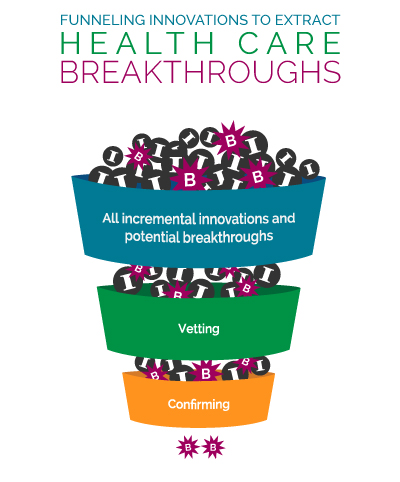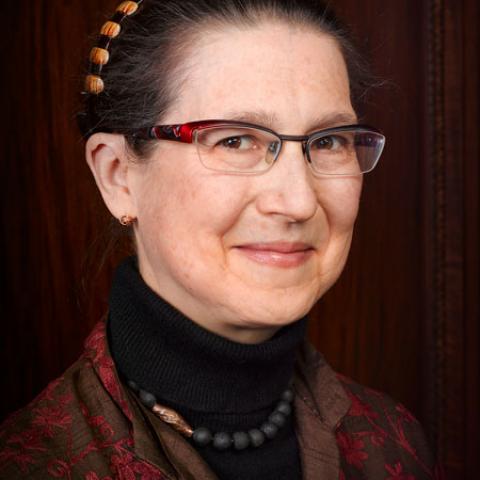It is well documented that health care in the United States is not just expensive; it’s world-class expensive, and unsustainably so. And although many would like to believe that all that spending buys us the safest, most effective care to be found anywhere on the planet, it is equally well documented that our health care system, on many levels, doesn’t measure up on a global scale. We’re simply not getting what we pay for.
Clearly, it’s going to take more than minor tweaks or adjustments to change our course. It’s going to take a real breakthrough.
What do we mean by a breakthrough? Though incremental change is valuable, and The Commonwealth Fund pursues this in many of its other programs, that’s not what we’re looking for here. We mean an idea, a paradigm, a strategy that positively and profoundly disrupts the status quo.
The good news is there is no shortage of innovative ideas and—thanks to modern social networks—no limits on the flow of information. Moreover, easily generated prototypes and new investment models can allow us to move rapidly from concept to reality. But with so many ideas in circulation, the task is how to identify which ones have the highest probability of achieving breakthrough impact.
The Commonwealth Fund’s new Breakthrough Health Care Opportunities program aims to discover and vet transformative ideas that have the potential to expand access to care, dramatically simplify the delivery of care, decrease costs, and improve health outcomes. The program also seeks to “grease the wheels” of the development cycle so that breakthroughs can realize their potential.
What Makes for a True Breakthrough?
Whether there have been real breakthroughs in health care delivery, at least, is open for debate. Surely, there have been potential breakthroughs—for example, the prepaid health care model used by Kaiser Permanente and others to promote value in care. But would-be game-changers like this have never been scaled to achieve nationwide impact.
So how will we know a breakthrough when we see one? First, we’ll be looking for breakthroughs in health care delivery, over the development of new drugs, equipment, or technical innovations.
We’ve set the bar high. Here are our working criteria for a breakthrough:
- How much does it disrupt the status quo? We’re looking for major disruption—a whole new approach that represents a break with what we do now.
- How big a difference will it make? Broad societal impact is the goal, with large numbers of people benefiting nationwide. To gauge impact, we're using a 20/20 rule for screening breakthroughs: the potential must be at least a 20 percent improvement in health care quality and/or a 20 percent reduction in costs nationally.
- How quickly can it become a reality? The timeframe we envision is up to 10 years to achieve impact.
A final consideration is whether a compelling case can be made that a potential breakthrough is able to meet all these criteria amid the realities of the day-to-day health care delivery, payment, and regulatory environment. 
Where Do We Begin?
To uncover breakthroughs, we’ll cast our net broadly—not only within health care but across other fields and disciplines as well—reaching out to providers, entrepreneurs, investors, and consumers. Our scanning efforts will be guided by the breakthrough criteria described above; they will be global in scope, encompassing the United States and other developed and emerging economies; and they will draw upon multiple sources. We’re also likely to harvest ideas using social media and other crowdsourcing methods.
Although we have yet to begin a formal process to identify and vet breakthroughs, I'll share a few nominations to get the conversation started. While these may not in the end yield actual breakthroughs, they serve as useful illustrations of the scale and ambition we believe are needed to achieve dramatic improvements in U.S. health care:
- Wiring the health system to reengineer the way we collect, store, and use health information, so we can achieve the kind of efficiency gains that technology has produced in most other aspects of our lives.
- Automating health care to allow, for example, the substitution of technology for significant portions of care delivery that is now performed by highly paid and scarce professionals.
- The massive and widespread implementation of financial risk-sharing arrangements to encourage more careful allocation of resources and create incentives to keep patients healthy.
Our work in exploring breakthrough opportunities is just beginning. We will seek ideas from a broad network of colleagues, and communicate what we find along the way. Please share your thoughts with us here or Tweet them with the hashtag #hcbreakthrus.



